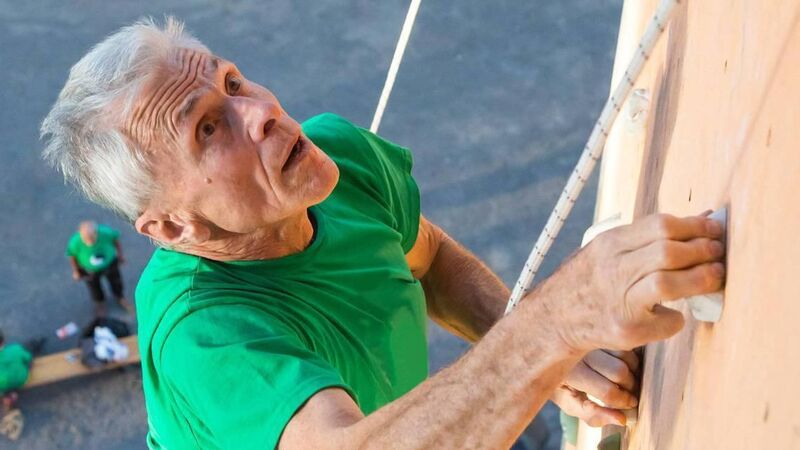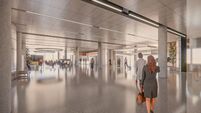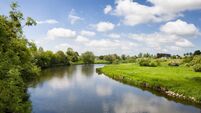Cork Views: Making Ireland a better place to grow old

Too often, the language of ageing centres on burden and decline, rather than contributing to society
When I joined the Cork County Older People’s Council in 2017, I wanted to make sure that older voices in our communities were not just heard but truly valued.
Eight years later, as I take on the role of Vice Chair of the National Network of Older People’s Councils, that motivation remains exactly the same - to build an Ireland where growing older is something we can all look forward to.
Ageing is part of every life story. Yet too often we treat it as a challenge to be managed rather than a stage to be celebrated. The reality is that ageing well is possible when people feel connected, supported and included in the places they live. That’s the core principle of Age Friendly Ireland and it has transformed how local and national government think about planning, housing, transport, and community life.
Here in Cork, I’ve seen the difference that approach makes. Through Age Friendly Ireland’s support of the Older People’s Councils, older people have helped to shape practical improvements that make towns and villages safer and more welcoming for everyone, from accessible parking and walkways to clearer signage and better public seating.
These might sound like small steps, but together they build dignity, confidence, and independence.
I am particularly proud of leading initiatives that brought people together, shaped local services, tackled isolation, and created opportunities for connection and inclusion. One example was a countywide walkability audit that identified barriers and proposed improvements, focusing on the safety and accessibility of public spaces for older people, people with disabilities and advocacy groups.
That process gave us a more comprehensive perspective on what inclusion really looks like.
Ultimately, when older people are part of the conversation, the solutions improve for all. The same ramp that helps a person using a walking aid also helps a parent with a buggy. The same well-lit street that makes an older person feel safe makes life easier for teenagers heading home from a club. Age-friendly design is, in truth, just good design.
However, physical infrastructure is only part of the story. Connection is just as vital. Loneliness and isolation have become hidden public health issues, yet the cure isn’t only found in hospitals. It’s also found in community halls, Men’s Sheds, choir rehearsals, and walking groups. These spaces keep people engaged and purposeful, which is essential for both mental and physical wellbeing.
That spirit of connection is why I’ve always believed in intergenerational work. Through my decades with the Irish Girl Guides - 46 years and counting - I’ve seen how much we can learn across generations. As a President’s Award (Gaisce) leader, I’ve encouraged students to think about how their projects can make a difference to older people’s lives.
I was recently invited by students from Munster Technological University to discuss online safety - a brilliant initiative that opened up a conversation about how technology can unite rather than divide generations.
By bringing that experience to national initiatives such as Hi Digital, I hope to help create opportunities for older adults to connect with younger people, gain new digital skills and build confidence online. This kind of intergenerational exchange bridges the digital divide, along with fostering real relationships, mutual respect and a stronger sense of community.
At a national level, Age Friendly Ireland helps make that happen. As the organisation implementing the Government’s vision of an Age Friendly Ireland, it supports all 31 local authorities to create inclusive environments guided by the World Health Organization’s eight domains - transportation; outdoor spaces and buildings; housing; social participation; respect and inclusion; civic participation and employment; communication and information; and community support and health service.
In Cork, that vision is visible in initiatives like the Healthy Age Friendly Homes Programme, which helps people live independently and with dignity in their own homes, and in the Cork County Age Friendly Strategy 2024-2028, which focuses on healthcare, transport and participation. These are practical measures that make daily life better - not only for older people, but for the wider community.
Challenges remain, of course. Transport in rural areas, access to digital services and affordable housing continue to affect people’s ability to stay independent. But progress happens when older people are at the table, when lived experience shapes the policies and investments that follow. That’s what the Older People’s Councils were created to do: to turn consultation into real collaboration.
We also need to shift how we talk about ageing. Too often the language still centres on burden and decline, when the truth is older people contribute enormously, as volunteers, mentors, carers, taxpayers and keepers of local history and culture. Many grandparents provide vital childcare that allows their children to work, strengthening families and the economy alike.
We just marked International Day of Older Persons on October 1, so it’s the perfect moment to rethink our mindset. The question isn’t ‘How do we care for older people?’ but ‘How do we build communities where everyone can age well?’
Growing older is inevitable; growing older well is something we can shape together. By listening, planning and acting with inclusion at the heart of everything we do, we can ensure that Ireland isn’t just a great place to grow up. It’s also the best place in the world to grow old.







 App?
App?




